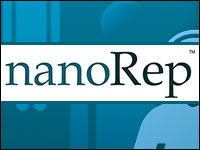
During the past few years, customer service organizations have faced increasing amounts of pressure to deliver better service over a broader range of channels including the Web, email and phone. Customers expect to get service at any time of the day or night and assume that customer service teams will keep a history of all interactions.
More recently, the social network boom has created a new revolution in customer service. The reach and immediacy of Twitter, Facebook and, now, Google+ has made the voice of the customer an extremely powerful force. Bad customer experiences can quickly snowball into online customer uprisings leading to PR disasters.
In addition, the proliferation of smartphones and tablets has raised customer expectations for timely response. Customers now expect to reach companies from anywhere, at anytime, and through any device that they choose such as iPads, iPhones and Blackberry and Android smartphones. While it used to be expected that customer inquiries would be answered in a couple days, now customers expect answers in hours, if not minutes.
As is often the case, tech-savvy startups are the first to embrace new technologies and communication channels. Larger, more traditional organizations are now finding that they need to develop new customer service strategies or else smaller, more nimble organizations may leave them in the dust and take their customers with them.
The exciting part of this ever-changing environment is that these new pressures have lead to both innovation and disruption in customer service.
The Help Desk Goes Social
When traditional customer service software was developed, the pressures of supporting new and multiple online channels just didn’t exist; the products were never designed to accommodate input from social media or run on mobile devices. As companies using these traditional solutions look to update their customer service software infrastructure to keep up with new channels, many realize that they cannot afford to expend 6 to 12 months to customize their current help desk solution if it were, indeed, even possible.
As a result, many companies are making the move to cloud-based Software as a Service (SaaS) solutions. These have proven to be a fastest and most cost-effective alternative to updating on-premise packages. More importantly, these new cloud-based solutions are specifically designed for multi-channel customer service.
As an example, let’s take a look at Twitter as a channel. Studies by Edison Research have indicated that 19 percent of Twitter users seek customer service via Tweets. With more than 200 million users, this means 38,000,000 customers are seeking service via Twitter. Modern customer service solutions have made this manageable by allowing companies to create custom searches for their brand names and product names on Twitter. When a problem is encountered, the tweet can be immediately converted into a customer service ticket, known as a u201ctwicket,u201d in this case. The twicket then can be assigned to the most appropriate person in the company to respond. That response can then be sent as a tweet or a direct message.
The Help Desk Goes Mobile
On the hardware side, customers and employees do more and more on mobile devices than ever before. In fact, the mobile revolution seems like an unstoppable force with more than 5.3 billion mobile subscribers worldwide (by the way, that’s 77 percent of the world’s population).
Today the mobile consumer and the mobile workforce are rapidly converging. Whether officially sanctioned or not, many customer service employees already make use of their smartphones, iPads, and personal accounts like Twitter and Facebook to solve their customers problems because these channels make their jobs easier.
Being able to access customer service systems from anywhere frees services teams from their desks. It allows them to respond to and escalate customer inquiries from anyplace at any time. As a result, response times go down and customer satisfaction goes through the roof. Over and over again, we see examples of customers who are delighted to get timely responses from inquiries whether they’re over the Web, email or Twitter. When you strip away all the technology, what matters is that you’re taking care of the customer faster than ever before. In today’s increasingly connected world, that wins customer loyalty and creates a huge competitive advantage.
Multiple Channels, Unified Tools
However, the more customer service channels a company supports, the more challenging it can be to effectively track and respond to customer inquiries. In addition, every new channel has the potential to create confusion for both customer service agents and customers. For example, one customer service agent may respond to a customer via email while another is communicating over Twitter. It can create the classic problem of the right hand not knowing what the left is doing.
To avoid these issues, companies need all their channels to feed into a central help desk with a unified set of business processes. While requests may arrive in different ways, the organization should should strive for consistency across channels. This will reduce an overlap of efforts, ensure consistent responses, and simplify the management of the customer service team.
That is exactly how the new generation of help desk solutions are designed. In fact, they can truly provide the fastest way to a great customer experience because they are easy to set up, funnel interactions from multiple channels into a single place, and improve the efficiency of customer service agents.
In Conclusion
Today’s companies are faced with having to deliver customer service across a wide variety of channels such as email, the Web, social media and mobile devices; it’s not just about having a call center or fax machine anymore. By supporting these channels, customer service organization have an amazing opportunity to deliver a truly awesome customer experience with the right processes and tools in place.
If the last update you made to your customer service organization was the addition of a support@ email address, it is probably time to seriously reassess your customer service strategy. Happy customers are loyal customers who not only keep coming back for more, but also spread the word about your company and products.














































